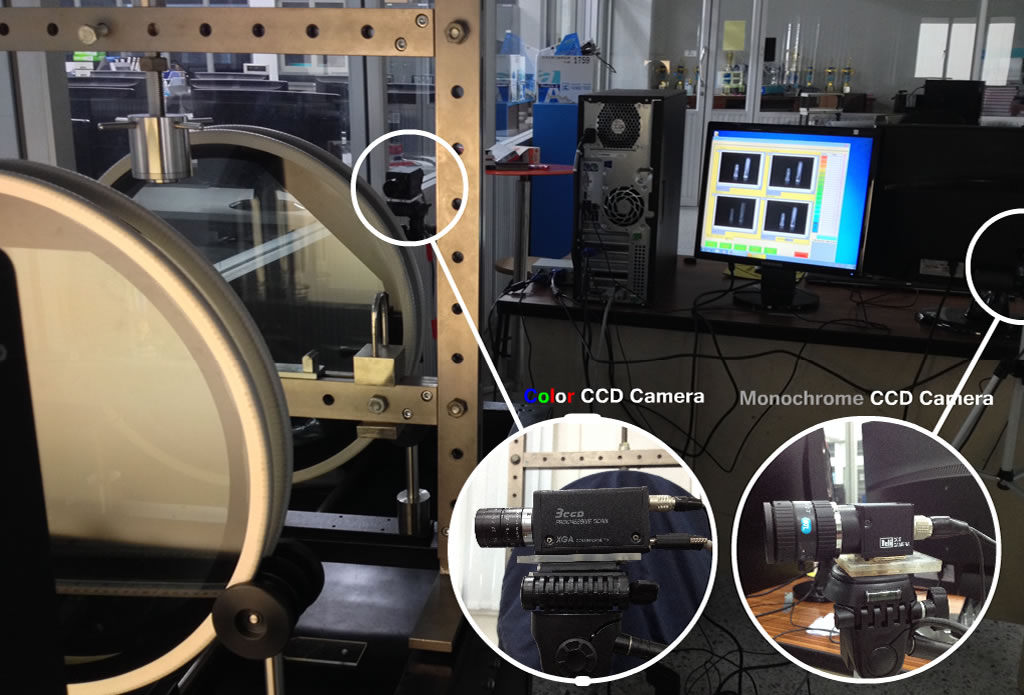The setup consists of two linear polarizers and a light source. The light source can either emit monochromatic light or white light depending upon the experiment. First the light is passed through the first polarizer which converts the light into plane polarized light. The apparatus is set up in such a way that this plane polarized light then passes through the stressed specimen. This light then follows, at each point of the specimen, the direction of principal stress at that point. The light is then made to pass through the analyzer and we finally get the fringe pattern.
The fringe pattern in a plane polariscope setup consists of both the isochromatics and the isoclinics. The isoclinics change with the orientation of the polariscope while there is no change in the isochromatics.
In a circular polariscope setup two quarter-wave plates are added to the experimental setup of the plane polariscope. The first quarter-wave plate is placed in between the polarizer and the specimen and the second quarter-wave plate is placed between the specimen and the analyzer. The effect of adding the quarter-wave plate after the source-side polarizer is that we get circularly polarized light passing through the sample. The analyzer-side quarter-wave plate converts the circular polarization state back to linear before the light passes through the analyzer.
The basic advantage of a circular polariscope over a plane polariscope is that in a circular polariscope setup we only get the isochromatics and not the isoclinics. This eliminates the problem of differentiating between the isoclinics and the isochromatics.
free vector



Pingback: โฟโตอิลาสติกซิตี (photoelasticity) | Pichet Pinit